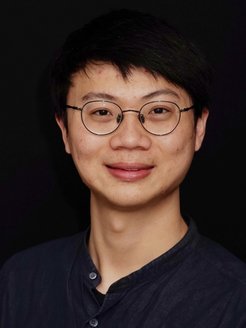Dr. Yingke Wu

Yingke received his Bachelor degree from Hebei University of Technology (Tianjin, China) in Polymer Materials and Engineering in 2014, and his Master degree from Sichuan University (Sichuan, China) in Polymer Science and Engineering in 2017. In the same year, he joined the group of Tanja Weil at the Max Planck Institute for Polymer Research (MPIP) and completed his PhD in 2021. After a short stint as a postdoctoral researcher, he was promoted to group leader in 2022 and leads the Nanodiamond group at the MPIP. In 2023, he received Functional Diamond 2022 Young Scientist Award.
Yingke is involved in the national cross-disciplinary collaborative research center (CRC1279) that aims to develop quantum sensing technology to understand the peptide-cell interaction quantitatively inside living cells.
Research Interest
In living biological systems, various biological reactions are constantly proceeding, causing an inhomogeneous distribution of different species, temperatures, and forces at the nanoscale. Local and quantitative detection of these environmental parameters and molecules including transient reactive structures with limited lifetimes will advance our understanding of living systems. However, current methods for measuring certain quantities at the nanoscale are often limited to strict conditions such as low temperature or vacuum and are not suitable for use in living systems. In our group, we are aiming to use nanodiamond (ND) quantum sensing technology for in-situ probing and manipulating the intracellular parameters such as temperature, pH, and radical species in living systems to establish communications between NDs and cells, and solve current challenges in biology and medicine.
In order to significantly improve sensing accuracy, we are currently exploring the “seeded growth” preparation method, small organic molecules such as adamantanes are used as precursors (or “seeds”) instead of small crystals and exposed to high-pressure and high-temperature (HPHT) reaction conditions. These organic precursor molecules could potentially enhance nucleation to form higher-quality NDs with distinct defects. Pre-organization of the defect atoms in the organic precursor molecules could provide new opportunities for the controlled growth of distinct color centers within the ND lattice. We aim to obtain high-quality NDs with a certain number of color centers in the defined location.
Key Achievements: In combination with photothermal agents, we have achieved nanoscale temperature manipulation and sensing inside a single living cell, and explored the influence of intracellular temperature inhomogeneity on cell apoptosis and intracellular transportation.
Selected Publications
